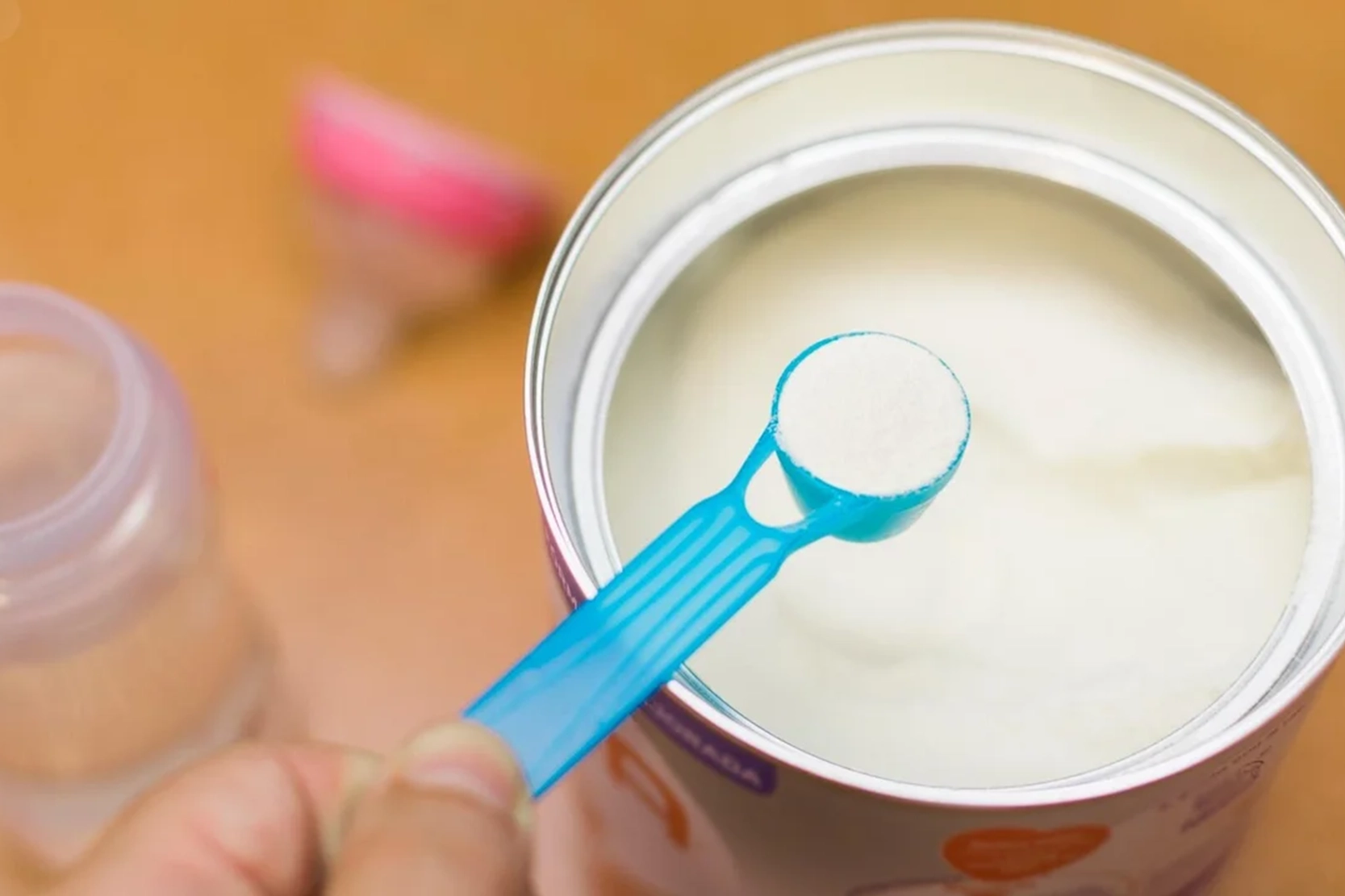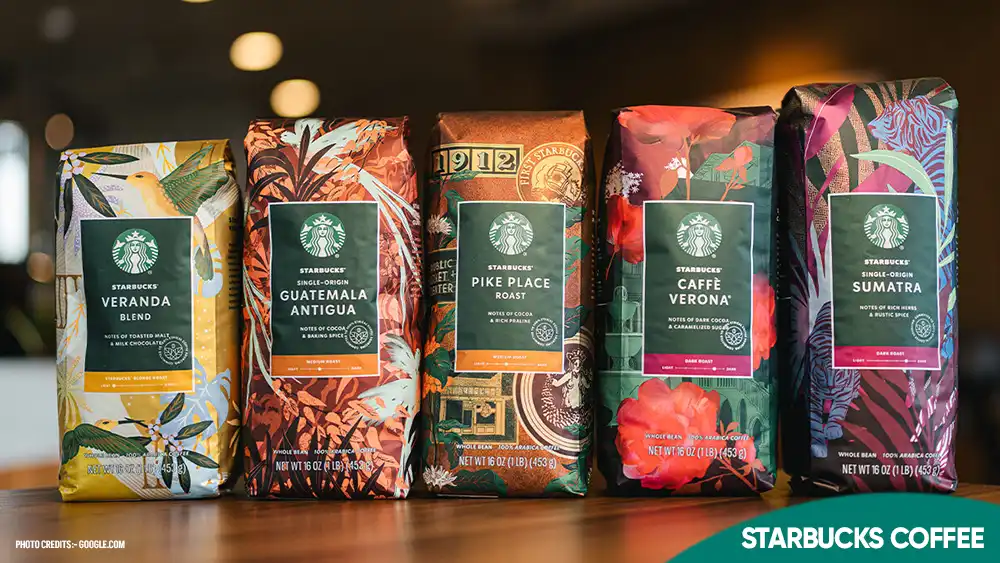
HEALTH BLOG
Starbucks Coffee Beans: Origin, Roasts, and Unique Qualities
-
Rahul Priydarss
Discover the world of Starbucks Coffee Beans, renowned for their exceptional quality and rich flavors. Sourced from premium coffee-growing regions like Latin America, Africa, and Asia-Pacific, these beans undergo a meticulous roasting process to achieve a range of profiles from light Blonde to robust Dark Roasts. Starbucks Coffee Beans are ethically sourced through the C.A.F.E. Practices program, ensuring sustainability and fair trade. Whether you enjoy them at a Starbucks café or brew them at home, these beans deliver a consistently satisfying coffee experience. Explore the diverse flavors and ethical sourcing of Starbucks Coffee Beans today.
Introduction to Starbucks Coffee Beans:
Starbucks coffee beans have become a staple for coffee enthusiasts worldwide, known for their quality and distinct flavors. These beans are sourced from some of the finest coffee-growing regions, including Latin America, Africa, and Asia-Pacific. Starbucks strongly emphasizes ethical sourcing, ensuring that their beans are obtained through fair trade practices that support both farmers and sustainable agriculture.
The roasting process at Starbucks is key to developing the rich and bold flavors that many coffee lovers seek. The beans are roasted to different levels, from blonde to dark, to cater to a variety of taste preferences. Whether you’re looking for a bright, citrusy light roast or a deep, robust dark roast, Starbucks offers a range of coffee beans that can be enjoyed in their cafes or brewed at home. With their commitment to quality, sustainability, and variety, Starbucks coffee beans have set a high standard in the world of coffee.
What Are Starbucks Coffee Beans?:
Starbucks coffee beans are the primary ingredient used to craft the popular coffee beverages served in Starbucks cafes around the world. These beans are sourced from diverse coffee-growing regions, such as Latin America, Africa, and Asia-Pacific, known for their ideal climates for producing high-quality coffee.
Starbucks offers various types of coffee beans, each roasted to highlight unique flavor profiles. They range from light to medium to dark roasts, with flavors that may include citrus, caramel, chocolate, or smoky undertones. These beans are carefully selected and ethically sourced to meet Starbucks’ standards for sustainability and quality.

Table of Contents
Origin and History of Starbucks Coffee Beans:
Starbucks coffee beans trace their origin to the finest coffee-growing regions across the globe, primarily from Latin America, Africa, and Asia-Pacific. The company’s commitment to sourcing high-quality beans began in 1971 when Starbucks opened its first store in Seattle’s Pike Place Market. Originally, the store specialized in selling premium coffee beans, equipment, and spices, with a strong focus on offering ethically sourced beans from sustainable farms.
As Starbucks expanded globally, so did its relationships with coffee farmers. They established long-term partnerships to ensure consistent quality and sustainability. Starbucks implemented the Coffee and Farmer Equity (C.A.F.E.) Practices program, which sets rigorous standards for ethical sourcing and environmental responsibility. This helped Starbucks build its reputation for great-tasting coffee and supporting the well-being of farmers and the environment.
Today, Starbucks’ coffee beans are a product of a long history of dedication to quality, innovation, and sustainability. These beans are carefully selected and roasted to bring out the best flavors, contributing to Starbucks’ status as a leader in the global coffee industry.
What Makes Starbucks Coffee Beans Unique?:
Starbucks coffee beans stand out due to their high-quality sourcing, ethical practices, and meticulous roasting process. The uniqueness of Starbucks coffee beans starts with their origin: they are carefully sourced from premium coffee-growing regions like Latin America, Africa, and Asia-Pacific. Starbucks prioritizes sustainable and fair trade practices through its C.A.F.E. (Coffee and Farmer Equity) Practices program, which ensures the beans are ethically sourced while promoting environmental stewardship and farmer welfare.
The roasting process is another key factor in what makes Starbucks coffee beans distinctive. Starbucks offers a wide range of roast profiles, from lighter “Blonde” roasts that are bright and citrusy to their iconic “Dark” roasts, known for their deep, bold flavors with smoky undertones. Starbucks’ mastery of the roasting process ensures that each bean’s flavor is developed to its fullest potential, resulting in a consistently rich and satisfying coffee experience.
Why Starbucks Coffee Beans Are Loved Globally:
Starbucks coffee beans have garnered worldwide admiration due to their consistency in flavor, variety of offerings, and ethical sourcing practices. The brand’s commitment to quality ensures that every batch of coffee beans delivers a reliable, rich taste that coffee enthusiasts can enjoy, no matter where they are. The wide range of roasts and flavor profiles, from light and citrusy to bold and smoky, offers something for every palate.
Variety in Offerings:
Starbucks caters to a broad range of tastes by offering a diverse selection of coffee beans. From the light and refreshing notes of their Blonde Roast to the bold and intense flavors of their Dark Roast, Starbucks has something for everyone. Whether you prefer single-origin beans from Africa with bright, fruity notes or a balanced blend from Latin America with hints of cocoa and nuts, Starbucks provides options to suit every coffee lover’s preference.
Ethical Sourcing Practices:
Starbucks’ commitment to ethical sourcing is a major reason for its global popularity. Through programs like C.A.F.E. Practices, Starbucks ensures that its coffee beans are sourced in ways that support farmers, protect the environment, and promote economic transparency. By prioritizing sustainability and fair trade, Starbucks not only delivers quality coffee but also contributes positively to the coffee-growing communities, which resonates with socially-conscious consumers worldwide.
The Different Types of Starbucks Coffee Beans:
Starbucks offers a diverse range of coffee beans, each crafted to suit different flavor preferences and brewing styles. Here are some of the main types.
Blonde Roast: The lightest roast Starbucks offers, Blonde Roast beans provide a bright and mellow flavor profile with subtle citrus notes. This roast is ideal for those who prefer a lighter, smoother coffee with a softer finish.
Medium Roast: Starbucks’ Medium Roast coffee beans strike a balance between bright and bold flavors. These beans offer a smooth, well-rounded taste with hints of caramel and cocoa. The popular Pike Place Roast is a standout in this category.
Dark Roast: For those who enjoy a more robust and intense coffee, Starbucks’ Dark Roast beans provide a bold, full-bodied flavor with deep, smoky undertones. French Roast and Italian Roast are classic examples, known for their rich and complex profiles.
Single-Origin Beans: Starbucks also offers single-origin coffee beans sourced from specific regions like Ethiopia, Sumatra, and Guatemala. These beans highlight the unique flavors of their growing regions, offering a distinct and often more nuanced taste, from fruity and floral to earthy and spicy.
Espresso Roast: Crafted specifically for espresso-based drinks, Starbucks Espresso Roast beans are dark, rich, and slightly sweet with a caramelized depth. These beans are perfect for creating lattes, cappuccinos, or enjoying a straight shot of espresso.

The Journey from Bean to Cup:
The journey of Starbucks coffee beans from the farm to your cup involves several meticulously managed steps to ensure the highest quality and flavor.
Sourcing: Starbucks begins by sourcing its coffee beans from diverse regions around the world, including Latin America, Africa, and Asia-Pacific. The company works directly with coffee farmers and cooperatives to ensure that the beans are ethically sourced and meet Starbucks’ quality standards. The Coffee and Farmer Equity (C.A.F.E.) Practices program is used to support sustainable farming practices and fair trade.
Processing: Once harvested, the coffee cherries are processed to extract the beans. This involves removing the fruit from the beans, which can be done through methods such as wet processing or dry processing. The beans are then dried and prepared for export.
Roasting: Upon arrival at Starbucks roasting facilities, the green coffee beans undergo roasting. This step is crucial in developing the beans’ flavor profiles. Starbucks offers a range of roasts, from light Blonde to dark Italian, each designed to bring out distinct flavors and aromas. The roasting process is closely monitored to ensure consistency and quality.
Blending and Packaging: After roasting, beans may be blended to achieve specific flavor profiles. For instance, Starbucks blends different beans to create signature blends like Pike Place Roast. The coffee is then packaged to preserve its freshness and flavor. Starbucks ensures that the packaging maintains the quality of the beans until they reach customers.
Brewing: Whether enjoyed at a Starbucks café or brewed at home, the final step is brewing. Starbucks offers various brewing methods, including drip coffee, espresso, and French press. The brewing process brings out the best in the coffee beans, delivering a rich and satisfying cup.
How to Brew Starbucks Coffee Beans at Home:
Brewing Starbucks coffee beans at home can be a delightful way to enjoy the rich, flavorful experience of Starbucks coffee without leaving your house. Here’s a guide to help you brew the perfect cup.
Choose Your Coffee Beans: Start by selecting the type of Starbucks coffee beans you prefer. Whether you enjoy a light Blonde Roast, a balanced Medium Roast, or a bold Dark Roast, choose a blend that suits your taste.
Grind the Beans: For the freshest coffee, grind the beans just before brewing. The grind size should match your brewing method:
- Coarse Grind for French Press.
- Medium Grind for drip coffee makers.
- Fine Grind for espresso machines. Invest in a good quality burr grinder for a consistent grind size.
Measure the Coffee: Use the right coffee-to-water ratio for your preferred strength. A general guideline is 1 to 2 tablespoons of coffee per 6 ounces of water. Adjust the amount based on your taste preference.
Heat the Water: Use fresh, filtered water and heat it to the appropriate temperature. For most brewing methods, the water should be between 195°F and 205°F (90°C to 96°C). Avoid boiling water as it can burn the coffee grounds and result in a bitter taste.
Brew the Coffee: Follow the brewing instructions for your chosen method.
- Drip Coffee Maker: Add the ground coffee to the filter, pour the water into the reservoir, and start the machine.
- French Press: Add the grounds to the press, pour in hot water, stir, and let it steep for about 4 minutes before pressing down the plunger.
- Espresso Machine: Load the grounds into the portafilter, tamp them down firmly, and brew according to your machine’s instructions.
Enjoy Your Coffee: Once brewed, pour your coffee into a cup and enjoy it black or with your preferred add-ins like milk, cream, or sweeteners. For an extra touch, consider adding flavored syrups or spices to customize your brew.
Ingredients of Starbucks Coffee with Quantity:
| Ingredient | Quantity |
|---|---|
| Coffee Beans | 1 to 2 tablespoons per 6 oz (180 ml) of water |
| Water | 6 oz (180 ml) |
| Milk (Optional) | As desired (typically 2-4 oz for lattes, 6-8 oz for cappuccinos) |
| Sugar (Optional) | As desired (usually 1-2 teaspoons) |
| Syrups (Optional) | As desired (typically 1 pump per 12 oz drink) |
– This table provides a basic overview of the standard ingredients and quantities used for brewing Starbucks coffee at home. Adjustments can be made based on personal preferences and the specific type of coffee being prepared.
FAQs about Starbucks Coffee Beans:
A1: Starbucks offers a range of coffee beans including Blonde Roast, Medium Roast, Dark Roast, Single-Origin Beans, and Espresso Roast. Each type is designed to cater to different flavor preferences and brewing styles.
A2: Starbucks ensures quality by sourcing beans from premium coffee-growing regions and using rigorous roasting processes. They also implement ethical sourcing practices through their C.A.F.E. (Coffee and Farmer Equity) Practices program.
A3: Starbucks started sourcing high-quality beans in 1971 when they opened their first store. They have since built long-term relationships with farmers and implemented sustainable practices, enhancing their reputation for quality and ethical sourcing.
A4: Starbucks coffee beans are unique due to their meticulous roasting process, wide range of roast profiles, and commitment to ethical sourcing. These factors combine to produce consistently rich and diverse flavors.
A5: To brew Starbucks coffee beans at home, choose your preferred beans, grind them according to your brewing method, use the correct coffee-to-water ratio, heat the water to the right temperature, and follow the brewing instructions for your method (drip, French press, or espresso). Enjoy your coffee black or with desired add-ins.

-Please remember, to always consult with healthcare professionals or Doctors for personalised advice related to medical conditions.
Conclusion:
Starbucks Coffee Beans has earned its place as a global favorite by consistently delivering high-quality and flavorful coffee. With their origins rooted in some of the world’s finest coffee-growing regions and a strong commitment to ethical sourcing, Starbucks ensures that every cup supports sustainable practices and fair trade. The meticulous roasting process, which ranges from bright Blonde to bold Dark Roasts, allows coffee lovers to enjoy a diverse array of flavors tailored to individual preferences. Whether enjoyed at a Starbucks café or brewed at home, these beans promise a rich, satisfying experience. Starbucks Coffee Beans not only sets a high standard in the industry but also offer a rewarding taste experience with each brew.




